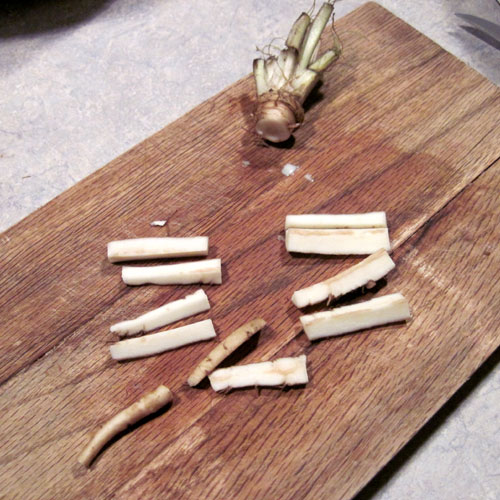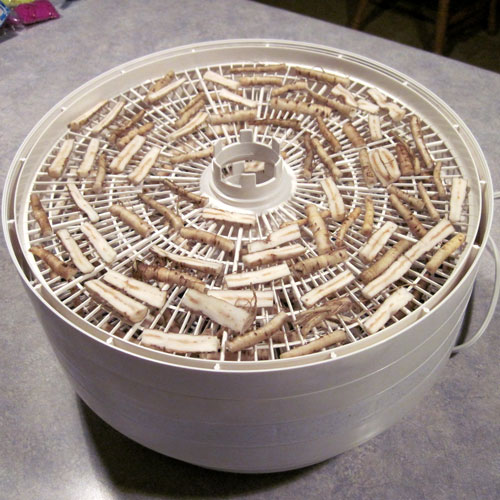Marcus Tullius Cicero said: If you have a garden and a library, you have everything you need.
***
Thanks to those at common sense home. com I retrieved this information on Dandelions; I found it to be very interesting and thought you might also!
When Should I Harvest Dandelion Roots?
Dandelion roots are best harvested from late fall through early spring, when the plant is dormant and has stored up energy in the root. For medicinal use, most sources say fall harvest is best. This is because the levels of inulin (insoluble fiber) are higher and the fructose levels are lower.
The freezing of winter converts the inulin to fructose, which makes spring roots more palatable for eating. Spring roots will be less bitter and chewy – just make sure you dig them before the plants start to blossom. Spring roots are also higher in taraxacin, which stimulates bile production.
What’s the Best Way to harvest Dandelion Roots?
To dig roots, use a dandelion digger or a sturdy fork. You want to break/damage the root as little as possible so you don’t lose much sap, which is where the medicinal properties lie. Deep, rich soil will produce the thickest, easiest to harvest roots. I always let a few dandelions go in the garden, as they are great for reaching deep into the soil to bring up nutrients. Make sure to harvest from areas that have not been sprayed/treated with anything noxious. Select large, vigorous plants – small, spindly plants will have small roots that are not really worth harvesting. One session of garden digging produced the root in the photo at the top of the post.
How should I preserve dandelion roots?
Dandelion roots can be used fresh for cooking and medicine. For long term storage, drying works best. Roots should be well scrubbed before cutting. Thick roots should be sliced lengthwise into strips of uniform thickness to decrease drying time and encourage uniform drying.
Use a commercial dehydrator to dry the roots at 95 degrees F until brittle. Alternatively, spread on a screen and place in a cool, dry location with good air flow, and dry for 3 to 14 days (until brittle). Dried roots will keep for about a year.
How do I Use Dandelion Root?
To extract the medicinal compounds for the roots, they must be decocted or tinctured. To make a tincture, place dandelion root in a jar and cover with 80 proof (40%) vodka. Cover tightly and allow to steep 4-6 weeks, shaking daily. Strain out plant material and store in a dark glass bottle. Label and date. (Susun Weed has a lovely post listing a variety of tincture options and their uses at Be Your Own Herbal Expert – Part 4.)
To make a decoction, place one ounce of dried roots or two ounces fresh roots (by weight) in a pan with one pint of water. Bring to a boil, cover, and simmer for 20 minutes. Strain and compost the spent roots. (From Dandelion Medicine.) Root decoctions can be used to make simple healing teas.
*Note: Dandelion root should not be used if you have irritable stomach or bowel, or if you have an acute inflammation. (source)
Dandelion root is well known as a detoxifying agent, but has also been used to treat everything from arthritis to hangovers.
The University of Maryland Medical Center states:
Traditionally, dandelion has been used a diuretic, to increase the amount of urine the body produces in order to get rid of excess fluid. It has been used for many conditions where a diuretic might help, such as liver problems and high blood pressure. However, there is no good research on using dandelion as a diuretic in people.
Fresh or dried dandelion herb is also used as a mild appetite stimulant and to improve upset stomach. The root of the dandelion plant may act as a mild laxative and has been used to improve digestion. There is some very preliminary research that suggests dandelion may help improve liver and gallbladder function, but the study was not well designed.
Some preliminary animal studies also suggest that dandelion may help normalize blood sugar levels and lower total cholesterol and triglycerides while raising HDL, “good,” cholesterol in diabetic mice. But not all the animal studies have found a positive effect on blood sugar. Human studies are needed to see if dandelion would work in people.
A few animal studies also suggest that dandelion might help fight inflammation.
To make a strong herbal infusion tea, use 1/2 ounce by weight of dried leaves or one ounce by weight of fresh leaves per cup of water. Place the ingredients in a glass canning jar. Cover with freshly boiled water. Put the lid on and steep overnight. Strain and compost solids. For medicinal purposes, drink 3-4 cups per day. Alternatively, use a French press, or steep (covered) for at least 20 minutes before straining.
Here are two recipes from Dandelion Medicine:
I’m-Sick-of-Cellulite Tea
Help your body metabolize fats and improve elimination of wastes with these cleansing herbs.
Infuse
- 1 part dandelion leaf
- 1 part nettle (Urtica dioica)leaf
Decoct
- 1 part dandelion root
- 1 part burdock (Arctium lappa) root
Decongestant Tea
This tea helps the body to clear phlegm and open the lungs and sinuses.
Infuse
- 1 part dandelion leaf
- 1 part nettle (Urtica dioica)leaf
- 1 part thyme (thymus vulgaris) herb
Decoct
- 1 part dandelion root
I hope you’ll give this humble weed a second look. It was the featured plant of Weeder Weeder #17.



No comments:
Post a Comment